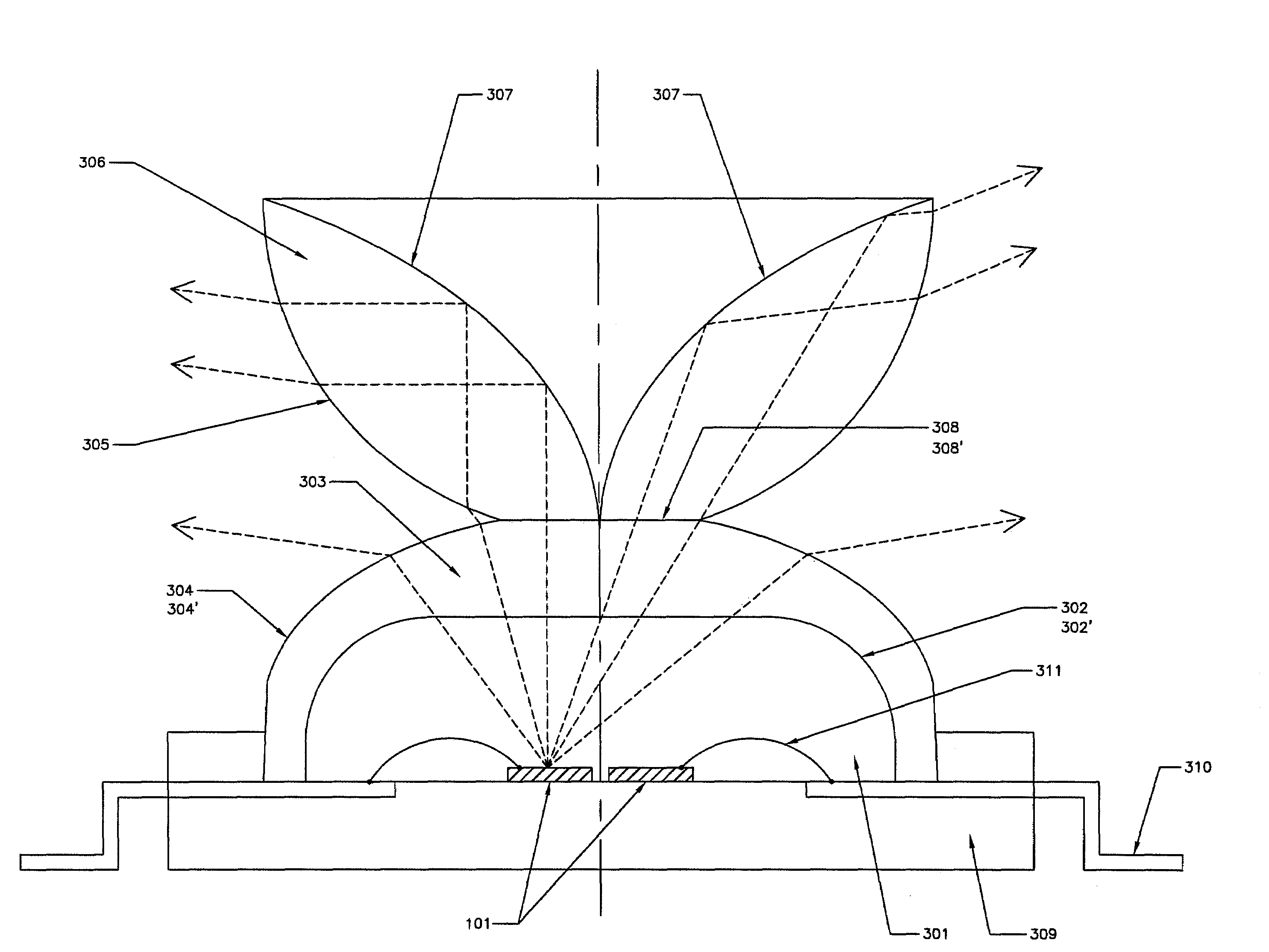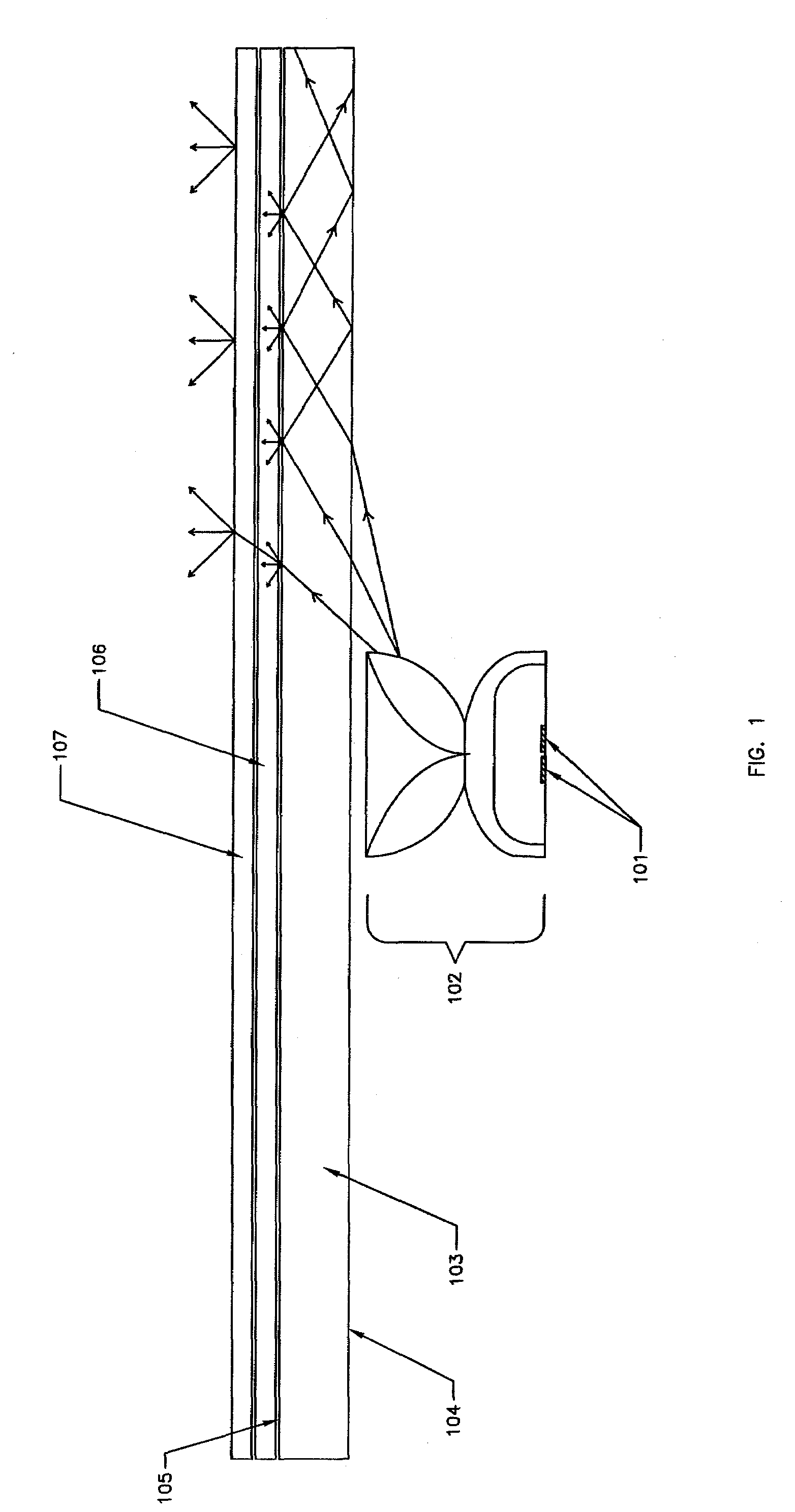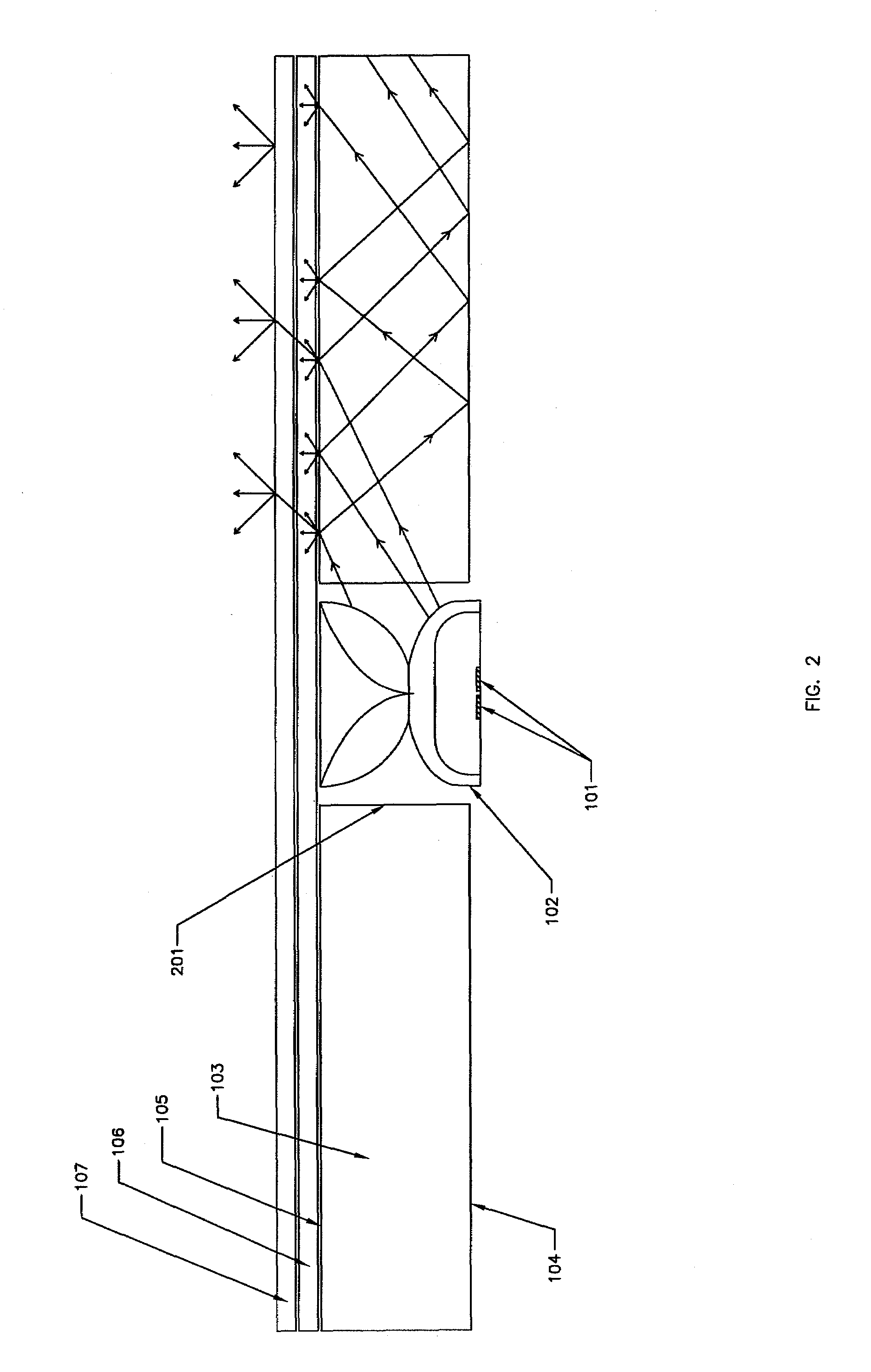Solid-state lateral emitting optical system
a lateral emitting optical system and solid-state technology, applied in the direction of instruments, lighting and heating apparatus, semiconductor devices for light sources, etc., can solve the problems of failure of the total internal reflection (tir) principle, undesired redirection of light outside the desired angle for both tir and reflective coating designs, and the failure of the total internal reflection principl
- Summary
- Abstract
- Description
- Claims
- Application Information
AI Technical Summary
Benefits of technology
Problems solved by technology
Method used
Image
Examples
Embodiment Construction
[0027]Integrating multiple LED chips with same or different colors in a compact compartment, as a lateral emitting cell is desirable for better color control, color mixing and lower cost. But it is very difficult to manage light output from multiple light chips with a single lens. Previous art provides solutions for a light cell with a single chip. However to the best of our knowledge, none of them describes an efficient solution based on a single lens for multiple chips.
[0028]The embodiments of this present invention provide a lens that will accommodate at least 2 light emitting chips and couple about 90% of the light emitted by these chips into a lightguide. The embodiments achieve such a high coupling efficiency while keeping the lateral and vertical dimensions of the lens preferably less than five times the lateral dimension of the light emitting area.
[0029]In one embodiment of the invention, the reflective surface is uncoated and the reflection is caused by total internal refle...
PUM
 Login to View More
Login to View More Abstract
Description
Claims
Application Information
 Login to View More
Login to View More - R&D
- Intellectual Property
- Life Sciences
- Materials
- Tech Scout
- Unparalleled Data Quality
- Higher Quality Content
- 60% Fewer Hallucinations
Browse by: Latest US Patents, China's latest patents, Technical Efficacy Thesaurus, Application Domain, Technology Topic, Popular Technical Reports.
© 2025 PatSnap. All rights reserved.Legal|Privacy policy|Modern Slavery Act Transparency Statement|Sitemap|About US| Contact US: help@patsnap.com



